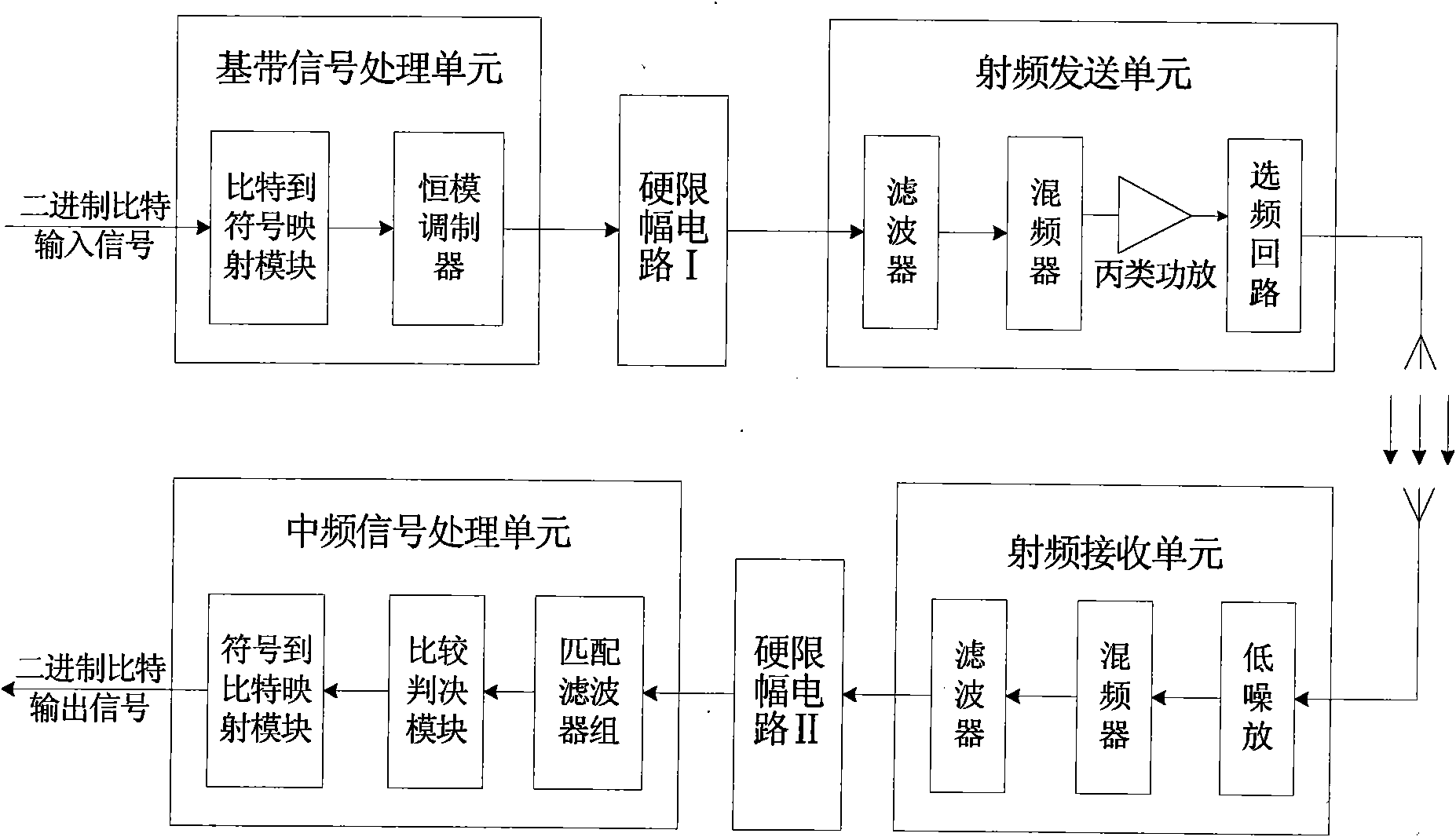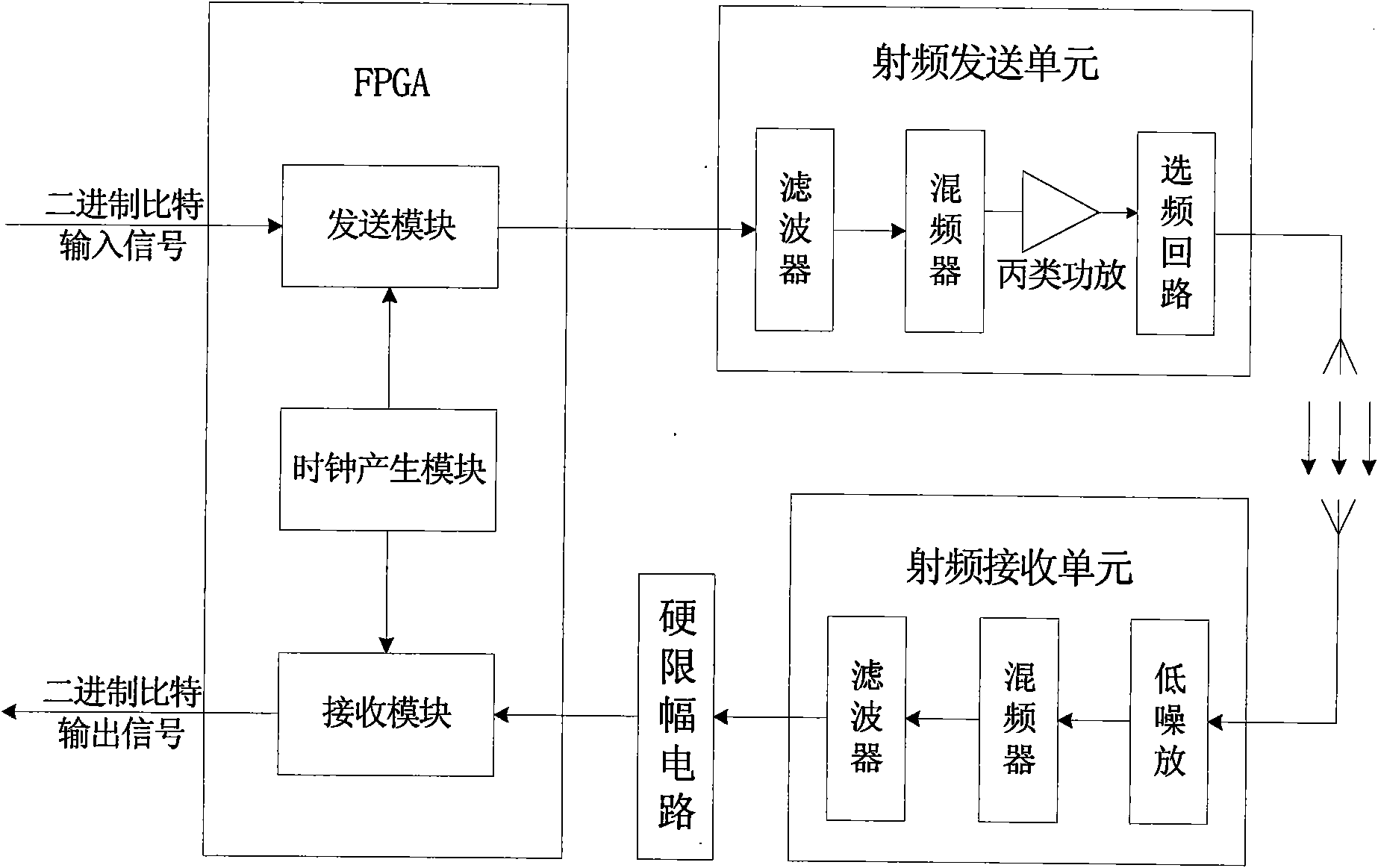Energy-saving wireless communication transceiver based on constant modulus signals
A wireless communication and transceiver technology, applied in the field of energy-saving wireless communication transceivers, can solve the problems of increasing the complexity and energy consumption of the receiver, not making full use of the benefits of spread spectrum, and loss of sensitivity, so as to improve energy utilization efficiency, Energy consumption reduction, the effect of reducing energy consumption
- Summary
- Abstract
- Description
- Claims
- Application Information
AI Technical Summary
Problems solved by technology
Method used
Image
Examples
Embodiment Construction
[0025] The present invention will be further described in detail below in conjunction with the accompanying drawings and specific examples.
[0026] like figure 1 As shown, a wireless communication transceiver based on a constant modulus signal, including:
[0027] a).Launching part
[0028] The transmitting part is composed of a baseband signal processing unit, a hard limiting circuit I, a radio frequency transmitting unit and a transmitting antenna. The signal processing unit includes a bit-to-symbol mapping module and a constant modulus modulator, which completes the conversion from the binary bit input signal to the transmitted symbol and modulates it to an intermediate frequency using a constant modulus modulation technique; the hard limiting circuit 1 converts the intermediate frequency signal into (0 , 1) or (-1, 1) binary sequence; the radio frequency sending unit includes a filter, a mixer, a class C power amplifier and a frequency selection circuit, and completes s...
PUM
 Login to View More
Login to View More Abstract
Description
Claims
Application Information
 Login to View More
Login to View More - R&D
- Intellectual Property
- Life Sciences
- Materials
- Tech Scout
- Unparalleled Data Quality
- Higher Quality Content
- 60% Fewer Hallucinations
Browse by: Latest US Patents, China's latest patents, Technical Efficacy Thesaurus, Application Domain, Technology Topic, Popular Technical Reports.
© 2025 PatSnap. All rights reserved.Legal|Privacy policy|Modern Slavery Act Transparency Statement|Sitemap|About US| Contact US: help@patsnap.com



